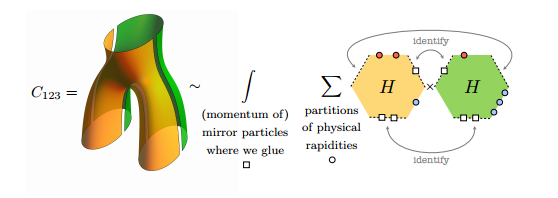Studying interactions in String Theory
Work based on ideas that emerged during the ICTP-SAIFR partnership with the Perimeter Institute provides a new way to look at how strings interact with one another
Between the months of November 2014 and February 2015, the ICTP-SAIFR made a partnership with the Perimeter Institute, of Canada, to study topics related to Field Theory. During this period, the collaboration promoted the exchange of researchers and students between the institutes. Three months after the end of the partnership, Benjamin Basso, Shota Komatsu and Pedro Vieira, published an article based on ideas that emerged throughout their time in ICTP-SAIFR.
“We had the ideas and started discussing them while we were in Brazil,” says Basso. “We immediately saw potential in these ideas, so we developed them and tested their veracity and predictions.”
Their work is in the field of String Theory – more specifically on its duality with strongly coupled Quantum Field Theories. According to the theory, strings are fundamental elements and their vibrations are related to the mass and energy of the particles that they form. The study of Basso and his colleagues provides a new way to look at how the strings interact, and to what happens when one of these strings is broken into two or when two strings join to form one.
“When trying to solve a complex problem in physics, we often try to break it into smaller and simpler problems”, explains Basso. “This is what we did in our work. Instead of studying a complex problem that involves an object in the form of a pair of pants, we cut this object in two hexagons. With these more elementary geometric shapes, we made the problem simpler both conceptually and technically; we could explicitly solve for these hexagons using the integrability of the theory”.
Click here to read the article.
The next step of the work will be to verify that the model remains valid after the hexagons are “glued” together again, recreating the original structure in the form of a pair of pants.
“We know that our description works well when the two halves are separated, but we don’t know if everything will continue to be fine after the union of the halves,” says Basso. “We are optimistic and will continue to polish the picture to verify this. If the model proves to be correct, we will have a better understanding of the elementary string interactions of this theory”.
